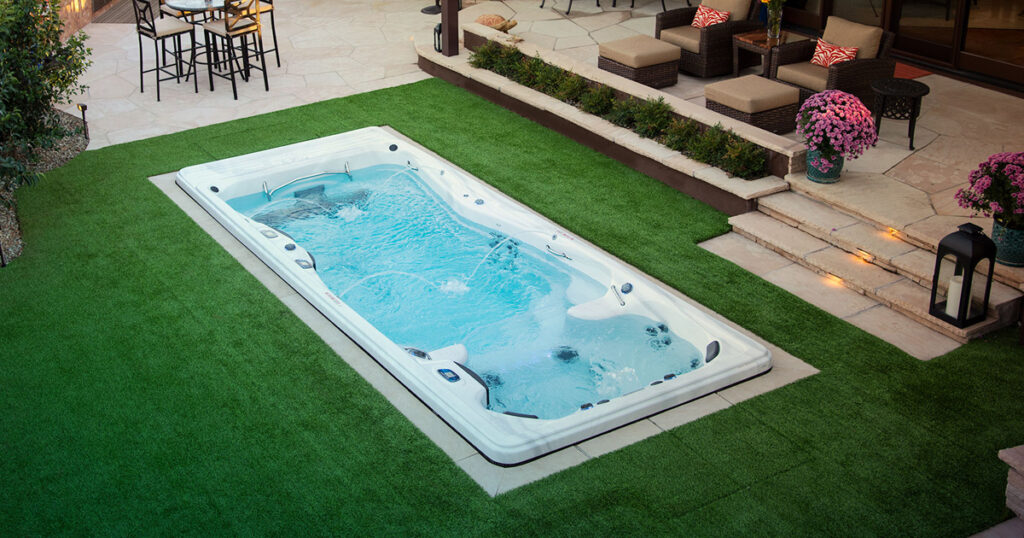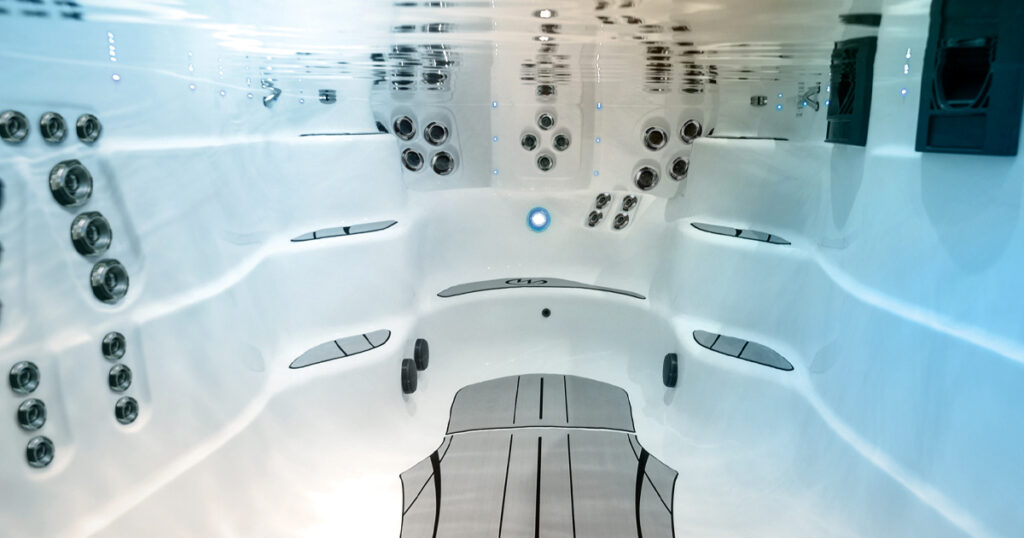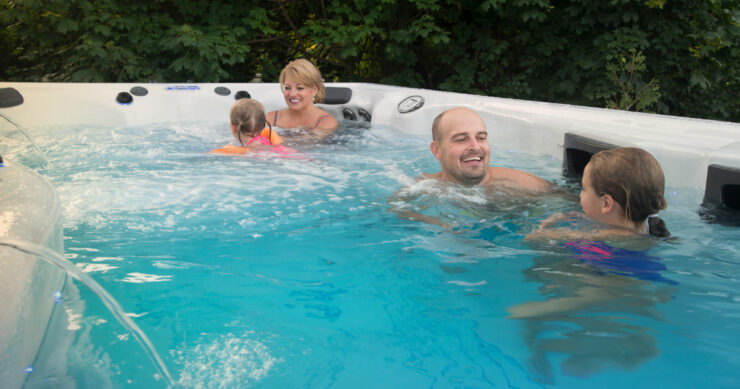Owning a swim spa is more than just swimming, relaxing on a float, and taking advantage of the built-in hot tub seating. OK, it is mostly enjoying the benefits of a pool without all of the work. But there is some work.
A swim spa, also called a swim-in-place pool, allows you to swim, exercise, and just enjoy being in the water. There’s also hot tub-style seating with built-in massage jets for relaxation.
Designed for year-round use, Master Spas swim spas feature a mineral filtration system to purify the water. Chemicals work alongside the system to keep the water clean, clear, and safe to use. Testing and maintaining these chemicals are an important part of swim spa care.
What happens, though, if you’ve tested your swim spa water and the pH levels are too low? (Hint: The answer is not to stress out.)
These tips will help you raise the pH levels of your Master Spas swim spa and balance other chemicals, too.

Swim spa maintenance and pH
Maintaining chemicals is one of the most important tasks for swim spa owners. When your water is balanced, it is clean, clear and safe for soaking.
You can test the pH of your swim spa water in myriad ways. However, many owners prefer the ease and convenience of test strips. The strips will also measure other chemical levels including total alkalinity, free chlorine, total chlorine, and hardness.
Master Spas recommends testing your swim spa water, including the pH, at least twice a week. Are you using your swim spa every day? Check the water before you hop in and balance the chemicals as needed.
Keep in mind that when you check your pH, you should look at the total alkalinity first. If your TA is in range, then you can move onto adjusting your pH.
Ideal pH range for swim spas
The range of the pH scale is 1 to 14, and it is used to measure the acidity of a liquid. Fresh water, in its purest form, has a pH of 7. But when you are measuring the pH of your swim spa, you want the water to be between 7.2 and 7.8.
What happens when the pH is too low?
- The water is too acidic and it is not safe for you to use the swim spa.
- Your eyes might sting and your skin can itch.
- The water can become cloudy.
- Chlorine might not effectively sanitize the water
- Metal components can corrode and stain the spa surface.

Why is the pH low?
Water should have a neutral pH but when other things are introduced, the acidity can change. Anything from minerals to grass, dust to body oils will affect the water chemistry of your hot tub.
If the pH in your swim spa is always low, it could be a natural contaminant affecting the levels in your spa. You might be walking through grass or mulch to get into the water (or those little kiddos are in and out, in and out!).
Another consideration is your source water. Yes, fresh water is supposed to be neutral. However, your municipality likely treats the water so that it is safe for drinking. The EPA recommends that drinking water has a pH be between 6.5 and 8.5. People who do not have city water or use well water might have acidic water as the soil and bedrock affects the pH.
There are other explanations for low pH:
- You added too much pH down when trying to balance the water. Swim spa chemicals should be added gradually, and you should check the water after 30 minutes to see whether the levels need further adjusting.
- Are more people using your swim spa? Natural oils and body lotions can lower the pH and make it harder for the chlorine to work. The more people in the swim spa, the more natural contaminants that can be introduced to the water.
- Adding too much shock, especially if the pH is already low, will make it harder to get your water in the proper range.

Balancing spa chemicals
A swim spa is an investment in your health and home, offering years of enjoyment. And it’s an investment that you want to protect.
Keeping the pH in the proper range is a part of that. However, how do you raise the pH in your swim spa water?
First step: Buy a pH increaser or other product designed to raise the pH of your water. Your local Master Spas retailer will have professional chemicals designed specifically for spas.
Next, add the product to the water, following the manufacturer’s directions. For this step in the process, it’s helpful to know how many gallons of water your swim spa holds. Check your owner’s manual for the details.
Keep in mind that you should always have the jets on and the cover off when adding chemicals to the spa.
Test the water after 30 minutes or up to an hour later. If the pH is still low, continue to add more product and test periodically until the water is in range.
During this time, do not add any other chemicals to the water or try to adjust other levels.
Patience is always the best course of action when trying to get your pH in range. Taking the time to balance the chemicals will be worth it when you can sit back, relax, and enjoy your swim spa.
How to buy a swim spa
Are you ready to enjoy the benefits of swimming, recreation, and relaxation year-round? Having a Michael Phelps Signature Swim Spa at home allows you to enjoy the benefits of a pool without the maintenance. You can click here to get more backyard ideas and picture what a Michael Phelps Signature Swim Spa would look like in your space. Or, contact your local Master Spas retailer to learn more about swim spa ownership. Wondering how much a Michael Phelps swim spa costs? You can request a quote here.

